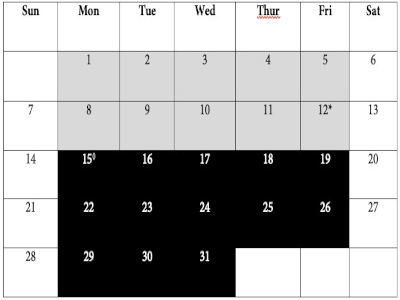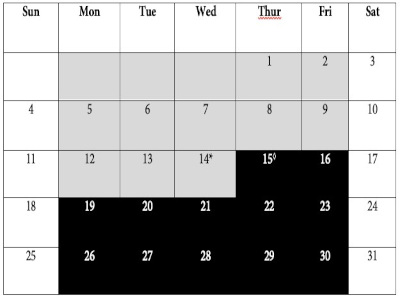By Jessica Groskopf and Cory Walters
Commodity marketing has its jargon. Common phrases you may hear are “nearby,” “deferred,” “new crop,” and “old crop” contract.
Before diving into these terms, recall that a portion of the corn, soybeans,and hard red winter wheat cash price is traded on a futures market, with the difference between cash and futures being basis. The existence of a futures market allow multiple futures contracts for the same commodity to be traded simultaneously. The number of futures contracts traded at one time differs by commodity and is defined by the futures market contract specifications. Futures contracts are named by the month and year that they expire.
Soybeans have seven contracts per year expiring in January, March, May, July, August, September and November. Corn and hard red winter wheat trade five contracts per year expiring in March, May, July, September and December. Corn, soybean and hard red winter wheat futures contracts all expire “on the business day prior the 15th day of the contract month,” this date is also defined by the contract specifications. The delivery period for the grain opens the first business day of the contract expiration.
“Nearby”
When some say the “nearby” contract, they indicate the contract that is closest to expiration when the statement was made. For example, if it is Jan. 1, 2021, the “nearby” contract for hard red winter wheat is the March 2021 contract. On March 15, 2021, the hard red winter wheat “nearby” contract changes to the May 2021 contract.
Figure 1. March 2021

*March 2021 contract expires
*◊May becomes the nearby” contract
Grain buyers will not price grain off of a futures contract in delivery as there are risks associated with trading a futures contract in delivery. As a result, grain buyers will “roll” their bids to the following futures contract before the beginning of the delivery period. Often, the roll will take sometime in the two weeks leading up to the first day of delivery.
“Deferred”
A “deferred” contract describes a contract that expires further in the future. Most often, it is used in context of the next contract. Let's assume it is June 1, 2021. The “nearby” contract for corn is July 202, while the first “deferred” contract is September 2021. It is important to remember that multiple contracts are traded at once and therefore “deferred” could explain any contract that is trading for a commodity that is not the “nearby”.
“New Crop”
The “new crop” contract refers to the contract closest to expiration during harvest. That means, for each commodity, the “new crop” contract is different. For Nebraska corn, “new crop” refers to the December contract; for hard red winter wheat, it refers to the July contract; and for soybeans, it refers to the November contract.
For example, if it is Jan. 1, 2021, the “new crop” contract for corn is December 2021. For hard red winter wheat, it is July 2021 and for soybeans, it is November 2021.
If the date is July 15, 2021, the “new crop” contract for hard red winter wheat changes to July 2022, but corn remains December 2021, and soybeans are still November 2021.
Figure 2. July 2021

*July 2021 contract expires
◊July 2022 becomes the “new crop” contract.
In U.S., the timing of harvest varies. For example, in the south, corn harvest is earlier. It is possible in some regions that the September corn contract is considered “new crop” contract.
“Old Crop”
When someone uses the phrase “old crop” contract, they are indicating the contract is being used to price grain that has already been harvested.
For example, let’s assume it is Jan. 1, 2021, and you are looking at corn prices for the coming year. Five futures contracts are being traded for 2021: March, May, July, September and December. As discussed earlier, December is considered the “New Crop” contract for corn in Nebraska. March, May and July 2021 contracts are considered “old crop contracts,” and they are used to market corn harvested in 2020.
Source : unl.edu